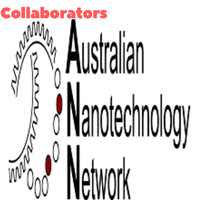
Bruno Sarmento
University of Porto, Portugal
Title: Bioengineered nanomedicines for modulation of intestinal anti-diabetic peptide delivery
Biography
Biography: Bruno Sarmento
Abstract
Diabetes mellitus is a high prevalence and one of the most severe and lethal diseases in the world with tremendous impact on health worldwide. Anti-diabetic peptides as insulin or GLP-1 are commonly used to treat diabetes in order to give patients a better life condition. However, due to bioavailability problems, their most common route of administration is the subcutaneous route. Invasive delivery route is, still, the most efficient, but less desired by patients. Non-invasive delivery systems have potential to overcome the most pressing problem regarding effective treatment of diabetic patients - therapy compliance, and is thus considered as convenient alternative, but it faces important challenges. Therefore, the nanoencapsulation of antidiabetic peptides into nanoparticles is presented as a good strategy to improve bioavailability.
In our research group, we have developing and characterizing nanoparticles containing insulin and/or GLP-1 peptides, following their evaluation as medical products to control diabetes upon oral delivery. In particular, we use poly(lactic-co-glycolic acid) (PLGA) modified with chitosan and a cell-penetrating peptide. Afterwards, glucagon like peptide -1 (GLP-1) loaded NPs were encapsulated into a pH-sensitive polymer and loaded with dipeptidyl peptidase-4 (DPP4) inhibitor, using a microfluidics technique. The in vivo tests were performed in a rat type 2 diabetes mellitus model by oral gavage, and the blood glucose levels were quantified. The plasmatic insulin levels, as well as the pancreatic insulin content, were also evaluated.

Our no-invasive technologies have demonstrated a clear efficacy in lowering the blood glucose levels in diabetic animal models. Not only nanoparticles have demonstrated to be able to cross biological barriers, but also provide sustain release of their peptide payloads. The interaction between the nanoparticles and the intestinal co-culture cells showed that there was a clear increase in the interaction between the modified nanoparticles with the cells. In the in vivo assays, the blood glucose levels decreased after 4 h of the administration of the particles and were kept low thereafter. The insulin levels increased along the time and the insulin pancreatic content was higher in the experimental groups in comparison with the control. No inflammation, cytotoxicity or tissue damage have been associated with chronic use of such nanoparticles, giving promising clinical application in a near future.
The developed particles were sensitive to different pH, showing high interact with intestinal cells. They allowed the dual-delivery of two different drugs in a single formulation. The very low activity of DPP4 enzyme prolonged the GLP-1’s half-life, thus increasing the insulin levels and decreasing the blood glucose levels along the time in vivo.
In this presentation, it will be demonstrate the feasibility of nanomedicines to improve the bioavailability and efficacy of antidiabetic biopharmaceutical drugs.

